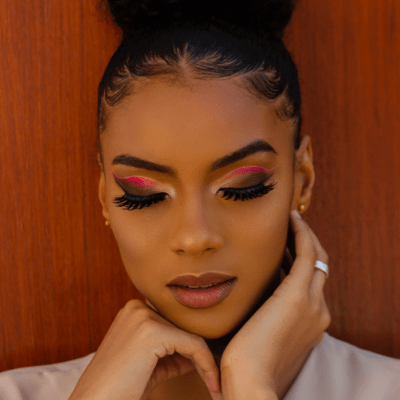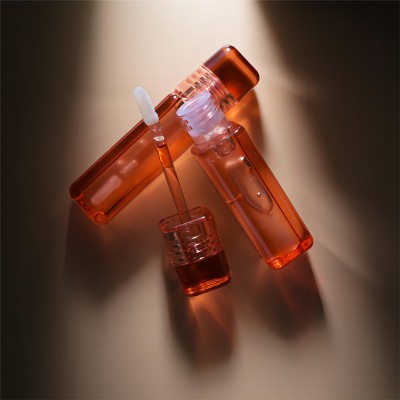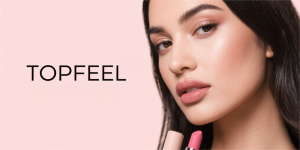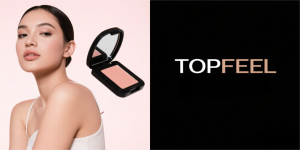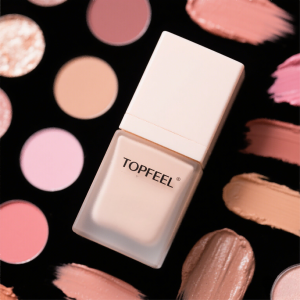How to Determine the Ideal Price for Your Private Label Products
Master the Craft of Pricing Private Label Cosmetics! Grasp how crafting expenses, market shifts, and worth perception shape your product’s price tag for peak profitability.
Key Factors Influencing Pricing for Private Label Products
Picking the perfect price for private label cosmetics is a layered task. It demands keen attention to various elements. From crafting costs to market currents, each piece plays a hefty role in setting the final price tag.
The Role of Production Costs in Pricing
Crafting costs lay the groundwork for your pricing plan. These outlays directly sway how much you can ask for your private label goods.
Calculating Direct and Indirect Costs
Direct outlays cover raw stuff and labor needed for making goods. Take Topfeel Beauty, for instance. They use 100% cosmetic-grade raw stuff, ensuring top-notch inputs. Indirect outlays—like plant upkeep and power bills—need factoring in too. It’s vital to tally all these costs. Why? To dodge underpricing your goods.
Considering Packaging and Branding Expenses
Packaging is another key piece. Tailored cosmetic packaging—like boxes, plastic holders, or quirky shapes—can boost worth. But it hikes costs too. Plus, branding moves, such as logo crafting and ad pushes, should slot into your pricing setup.
Market Research and Competitor Analysis
Knowing the market scene is crucial for setting sharp prices. This means sizing up rival tactics and gauging buyer habits.
Gauging Rival Pricing Tactics
Rivals often set yardsticks that nudge your pricing calls. Checking sites like auroracos.com or global-cosmetics.com offers peeks into trade norms. Study how rivals weigh quality against cost. This helps them stake their spot in the market.
Pinpointing Your Target Crowd’s Pay Willingness
Buyer probes reveal what your target crowd will shell out. Take Topfeel Beauty’s main buyers—Europe (46%), North America (16%), South America (28%), and Asia/Africa (10%). Each zone might have distinct price tolerances tied to cash flow and buyer whims.
Value Proposition and Perceived Quality
Your good’s worth pitch heavily sways its felt value among buyers.
Matching Pricing to Product Caliber and Brand Vibe
Top-grade ingredients and stamps lift trustworthiness. Topfeel Beauty sticks to FDA, EU, PROP 65 rules, ensuring safety and caliber. This backs a steeper price tag.
Unique Selling Hooks’ Impact on Pricing
Standout traits—like green packaging or fresh blends—can fetch higher tags. For example, Topfeel Beauty offers reusable packaging choices. These draw eco-savvy buyers ready to pay extra.
Pricing Strategies for Private Label Products
Once you’ve sussed out all swaying elements, picking a fitting pricing plan comes next.
Cost-Plus Pricing Approach
This clear-cut method adds a profit chunk to the total crafting cost.
Pros and Cons of Cost-Plus Pricing
Cost-plus pricing’s big perk is its ease. It ensures all costs get covered while locking in a steady profit slice. But it skips market hunger or rival tags. This might mean lost chances or overpricing.
Rival-Based Pricing Path
This plan sets tags based on rival rundowns.
Balancing Price and Market Stance
Rival-based pricing needs juggling affordability with felt worth. Say your good matches or tops rivals like makeuppalettepro.com but at a slimmer tag. It could pull budget-minded buyers without denting brand vibe.
Worth-Based Pricing Plan
Worth-based pricing zeros in on what buyers will pay, not just crafting costs.
Tapping Buyer Perception for Steep Pricing
If your good boasts unique perks—like vegan blends or cruelty-free stamps—it can back higher tags. Topfeel Beauty’s vegan and cruelty-free mixes hit this rising buyer slice spot-on.
Common Mistakes to Avoid When Setting Prices
Steering clear of common traps can shield you from cash dips or brand dents down the road.
Missing Hidden Costs in the Tally
Skipping tucked-away expenses—like shipping or storage fees—can eat into profit slices. Make sure every crafting and delivery angle gets tallied when setting tags.
Downplaying Market Currents’ Weight
Not keeping pace with shifting buyer whims or cash climates can leave your goods less sharp. Freshen your market probes often to stay ahead.
Skipping Regular Pricing Checkups
Pricing isn’t a one-off call. It needs steady reassessment. Stuff like raw stuff price swings or new rivals popping up should nudge you to revisit your plan now and then.
By grasping these crucial elements and wielding smart plans, you can set sharp yet juicy tags for your private label cosmetics. This sidesteps common snags along the way.
Topfeel’s Role as a Steady Cosmetic Goods Source
Private label cosmetics have turned into a bedrock for many beauty outfits aiming to carve a spot in the crowded cosmetics arena. Picking the right source is key to locking in product caliber, brand rep, and buyer joy. Topfeel Beauty shines as a relied-on ally for outfits looking to spark or grow their private label cosmetics line.
Rundown of Topfeel’s Skill in Private Label Cosmetics
Topfeel Beauty has staked its claim as a seasoned private label cosmetics maker since kicking off in 2009. With over a decade under its belt, the outfit excels in dishing out full makeup fixes—from eye makeup to tools. From design and crafting to quality reins, stock, and packaging, every phase rolls with pro and flawless steps.
The outfit boasts a wide spread of goods split into powder makeup, lotion-like makeup, and oil-based makeup. These cover pressed powders, eyeshadow sets, liquid bases, lip oils, mascaras, and eyeliners. This broad lineup ensures clients snag fixes tuned to their exact wants.
Topfeel’s drive for fresh ideas shines through its dedicated Research and Design crew. They whip up new goods monthly. Their lab dishes out ready-made blends and bends to craft bespoke mixes per client asks. Plus, the outfit ensures it hits rule marks for various lands.
Wrap-Up
Topfeel Beauty stands as a beacon of steadiness and skill in the private label cosmetics trade. Its full-service spread—from blend crafting to green packaging—makes it a priceless ally for brands aiming to dish out top-notch goods while keeping profits plump.
FAQs About Pricing Private Label Goods
What’s the go-to pricing plan for private label cosmetics?
Cost-plus pricing is a fave in private label cosmetics. This trick tallies total crafting costs—like raw stuff Topfeel uses—and tacks on a profit chunk. It’s simple and solid for covering outlays. Still, you’ve got to weigh rival tags and market hunger when locking in final prices.
How often should I rethink my product pricing?
It’s smart to eyeball pricing yearly at least. Or do it when big shifts hit crafting costs or market currents. Say raw stuff prices bounce or new rivals roll in. Those might call for tweaks.
Can I ask premium tags for private label goods?
Sure, especially if your goods flaunt standout hooks—like vegan blends or green packaging from Topfeel Beauty. Top-grade ingredients paired with stamps can back steeper tags. They hook eco-savvy buyers too.

